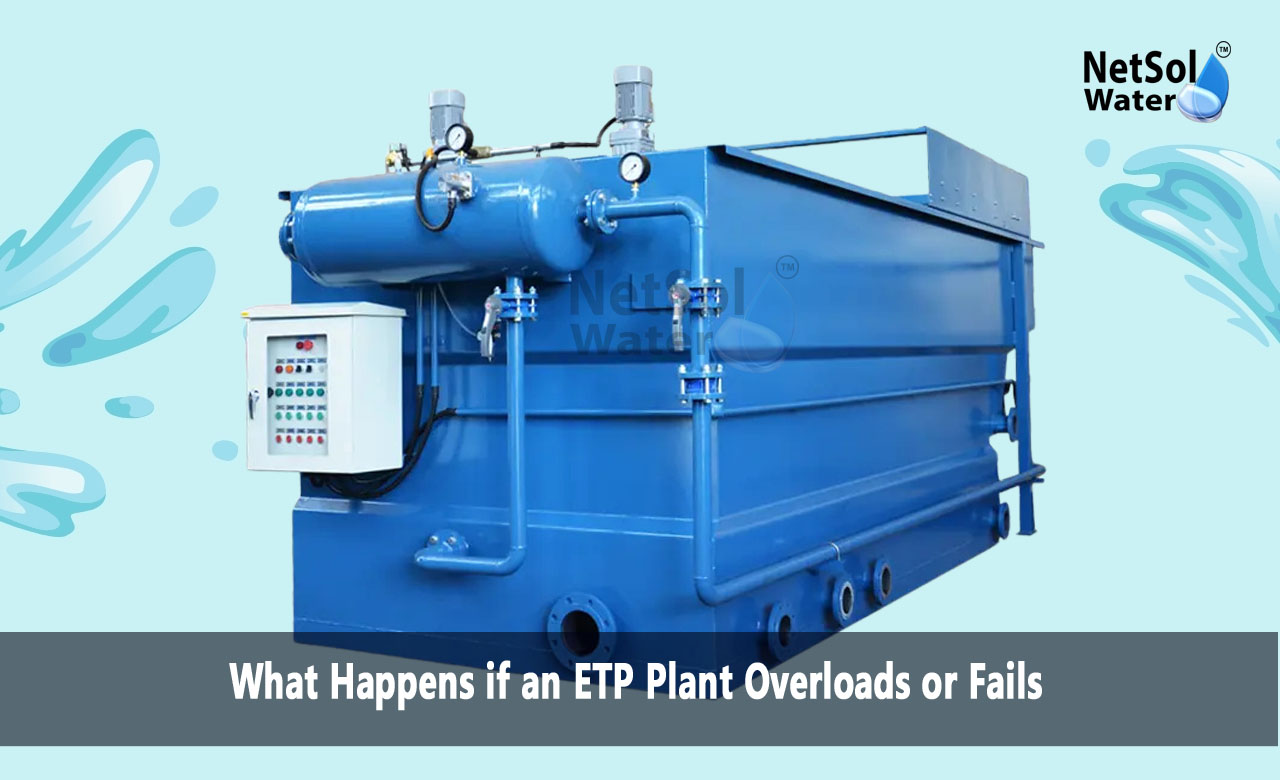What Happens if an ETP Plant Overloads or Fails?
An effluent treatment plant or ETP plays a key role in keeping water safe and ecosystems healthy. Netsol Water stands as a leading effluent treatment plant manufacturer in this field and delivers tailored solutions for industries of all sizes. When an ETP works as intended it removes harmful substances and prevents pollution. Yet systems face many challenges over time. If an overload or failure takes place then a cascade of problems begins. Industries may face legal action and suffer financial loss. Wildlife and local communities may face health risks. Netsol Water designs reliable equipment to reduce these risks and it offers expert support when problems occur.
Causes of ETP Overload and Failure
Before we look at the effects we must know why overload and failure occur. Plants remain safe when flow and contaminant levels stay within design limits. Exceeding those limits leads to stress and eventual break down. Let us have a look at some scenarios that bring on overload and failure.
Excessive Influent Load
Excessive flow or pollutant concentration may raise levels beyond what the system can handle. Poor process control or sudden surges in production add more contaminants than normal. This extra burden causes filters to clog and tanks to overflow.
Equipment Malfunction
Pumps motors and valves work in harmony to keep water moving and treatment stages active. Wear and tear or lack of routine inspection may lead to an unexpected failure. A broken pump forces other components to handle extra load. This imbalance may cause a chain reaction.
Design Limitations
Some plants face demands beyond what they were designed for. A change in production may call for more capacity or a different treatment method. If a plant remains unchanged then overloading becomes inevitable when demand grows.
Operational Consequences
Knowing the causes helps prevent many issues. Yet when failure takes place operations suffer in many ways. Let us have a look at some key effects on daily work.
Overflow and Spill Events
When tanks fill faster than they drain wastewater may spill onto the plant floor or beyond. Such events halt production until staff clean up the mess and adjust controls. This disruption may last hours or days.
Increased Downtime
Shutdowns grow longer when teams search for faults and replace parts. A single failed valve may force an entire segment to stay offline. Each hour of downtime raises operating costs and delays deliveries.
Quality Degradation
When treatment stages do not function then effluent quality drops below standards. Tests may show high levels of harmful chemicals and microbes. Regulators may then order a halt to discharges until quality returns to safe levels.
Environmental Impacts
An overloaded or failed ETP may send untreated water into rivers and lakes. When toxic substances reach the environment they create serious hazards. Let us have a look at some ways the ecosystem feels the impact.
Water Pollution
Discharges may carry heavy metals and organic pollutants. Fish and aquatic life may die or suffer long term damage when toxin levels rise. Such disturbances may take years to recover.
Soil Contamination
If spills spread onto land then soil may absorb dangerous compounds. Farmers may lose crops and groundwater may become unsafe for drinking. Restoring contaminated land demands costly remediation.
Airborne Hazards
In some cases gases build up in treatment tanks. A sudden release of hydrogen sulfide or ammonia risks harm to workers and nearby residents. Odour may spread and alert authorities to a problem.
Financial and Regulatory Repercussions
Plant managers must also face budget issues and legal duties when failures occur. The costs grow with each passing day of non compliance. Let us have a look at some of the financial and legal results that follow an overload or failure.
Penalties and Fines
Regulators impose fines when effluent limits exceed legal thresholds. Each violation adds to the total and may provoke stricter inspections. Companies may lose operating licenses until they restore compliance.
Repair and Replacement Costs
Broken pumps valves and sensors demand urgent repair or replacement. Teams may need to source spare parts from overseas. The longer they wait the higher the labour and shipping expenses.
Reputation Loss
Customers and investors value firms that follow good environmental practices. News of a failure may spread fast and damage public trust. Restoring a reputation often takes more time than fixing the technical issue.
Mitigation and Recovery Strategies
A well planned response cuts damage and speeds up recovery. Preventive steps shield both the plant and the environment. Let us have a look at some measures that help when an overload or failure happens.
Regular Monitoring
Installing sensors at key points ensures that flow and pollution levels stay visible at all times. Data alerts teams to rising trends long before limits break. Early action prevents many failures.
Preventive Maintenance
Routine checks and part replacements keep equipment in good shape. A simple lubrication of bearings may avoid a costly motor replacement later on. Proper maintenance extends the life of every component.
Emergency Response Plans
A clear set of steps guides staff when a failure takes place. Drills and training ensure that teams know how to isolate sections and deploy backup systems. Acting fast keeps spills and fines to a minimum.
Conclusion
Understanding what happens if an ETP overloads or fails helps every plant manager act before disaster strikes. Netsol Water stays at the forefront as a leading manufacturer of treatment equipment and it offers expert guidance to prevent and resolve failures. If you want to learn more about what happens if an ETP overloads or fails or if you need a consultation with our team then get in touch today to request expert advice or a system review.
Contact Netsol Water at:
Phone: +91-9650608473, Email: enquiry@netsolwater.com



